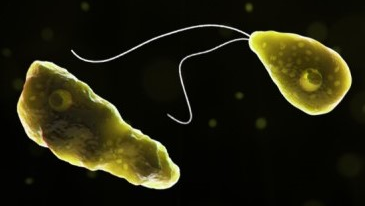Key points
- Amebic meningitis is rare.
- The Naegleria fowleri ameba (also called the "brain-eating ameba") lives in warm fresh water and soil around the world.
- These infections can be treated with medicines, but most people don't survive.
- Take steps to help protect yourself from N. fowleri infections, such as preventing water from entering their nose.

What it is
Primary amebic meningoencephalitis (PAM) is a rare brain infection caused by Naegleria fowleri. Only a few people are diagnosed with PAM in the United States each year.
N. fowleri is a free-living ameba. An ameba is a single-celled living organism that is too small to be seen without a microscope.
Symptoms
In its early stages, symptoms of PAM are typical meningitis symptoms, including headache, fever, and stiff neck. After the start of symptoms, the disease progresses rapidly.
When to seek medical care
Complications
Death usually occurs within 5 days (range 1 to 18 days) of the start of symptoms. Only a few people in the United States have survived after becoming infected with N. fowleri.
Exposure risks
Sources of infection
N. fowleri lives in warm fresh water and soil around the world. Infections often happen when it's been hot for long periods, resulting in higher water temperatures and lower water levels.
Risk factors
Fresh water exposure
Most N. fowleri infections occur when people swim or submerge their heads in warm fresh water like lakes, ponds, or rivers.
Tap water exposure
PAM may also occur when people use contaminated tap water to rinse their sinuses for religious or health reasons. In very rare instances, people have become infected from recreational water like splash pads and surf parks that didn't have enough chlorine.
Geographic location
In the United States, most infections have been linked to swimming in warm, southern states. However, evidence suggests the range of N. fowleri is expanding northward as the climate warms.
How it spreads
N. fowleri infects people by entering the body through the nose, usually while swimming. The ameba travels up the nose to the brain where it destroys the brain tissue and causes swelling of the brain.
How it doesn't spread
People cannot get infected with N. fowleri from drinking water contaminated with the ameba.
People also don't spread the infection to others.
Reducing risk
To help protect yourself against N. fowleri infection:
- Hold your nose or wear a nose clip if you're jumping or diving into fresh water.
- Always keep your head above water in hot springs.
- Don't dig in shallow water because the ameba is more likely to live there.
- Use distilled or boiled tap water when rinsing your sinuses or cleansing your nasal passages.
Testing and diagnosis
PAM is difficult to diagnose because of the rarity of the infection and the early symptoms (e.g., fever, headache) are similar to other illnesses. There are laboratory tests that can detect N. fowleri in spinal fluid.
Treatment and recovery
Several drugs are effective against N. fowleri in the laboratory. However, their effectiveness is unclear since almost all infections have been fatal, even when people were treated.
- In U.S. English, the single-celled living organism described here is an ameba. The word amoeba, with an "o", is used as part of a scientific genus name (such as Amoeba or Acanthamoeba). In British English, both the generic organism term and genera names are spelled amoeba with an "o."
